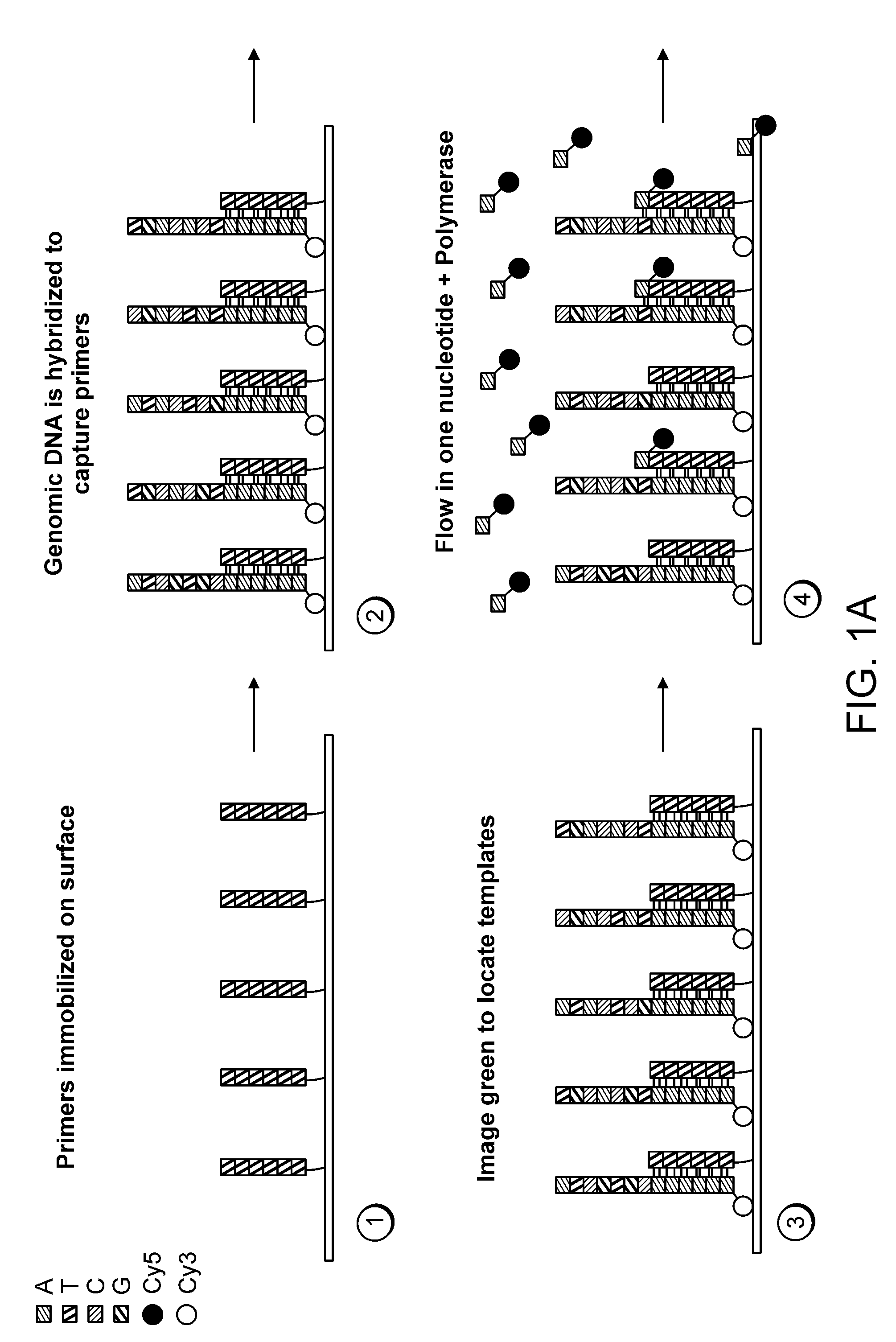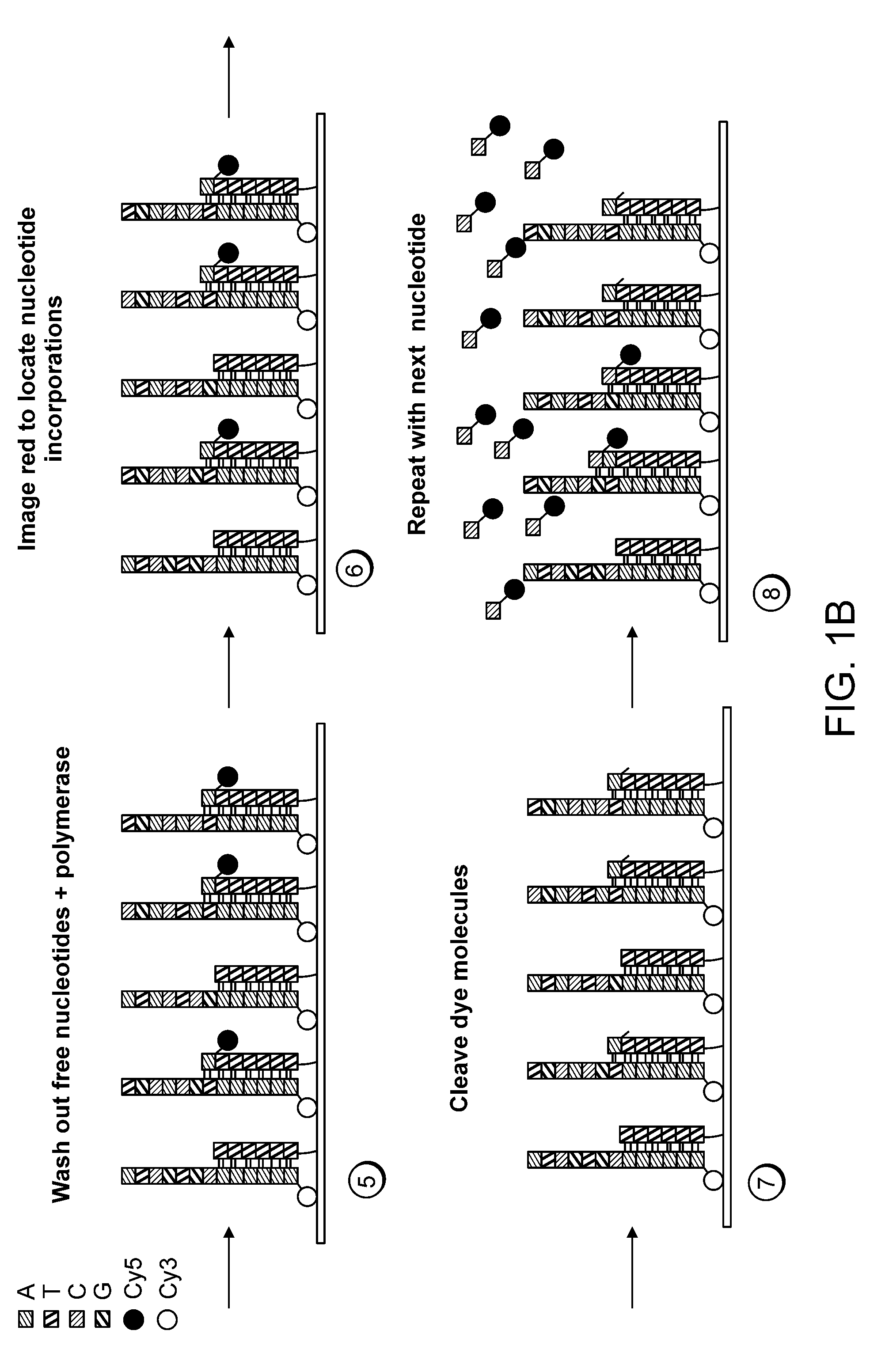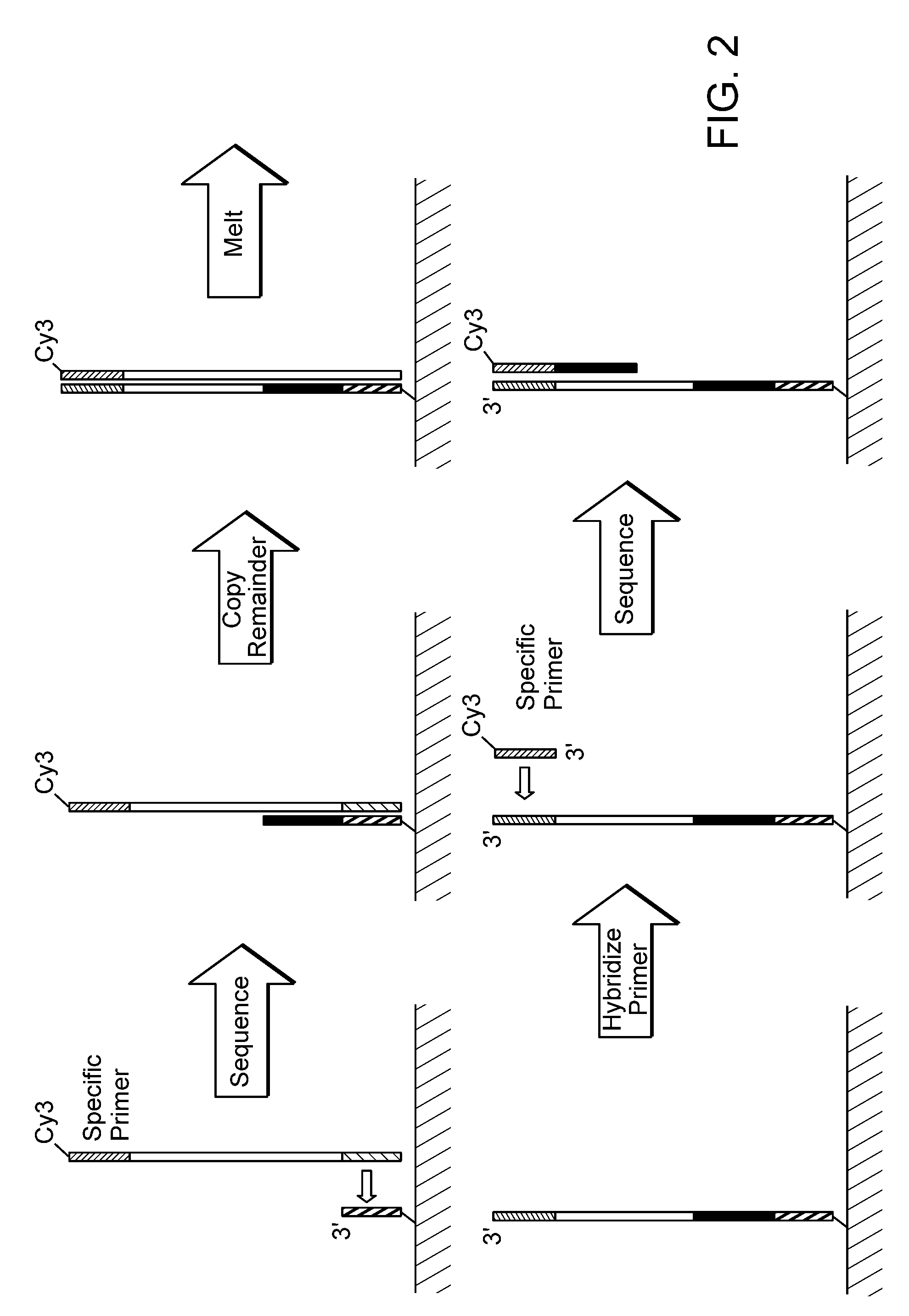Paired-end reads in sequencing by synthesis
a technology of paired-end reads and sequencing by synthesis, applied in the field of molecular biology, can solve the problems of limiting the use of microreads in a number of other applications, affecting the detection and proper placement of amplifications, and severely limited translocations using short reads, so as to achieve fewer sequencing errors
- Summary
- Abstract
- Description
- Claims
- Application Information
AI Technical Summary
Benefits of technology
Problems solved by technology
Method used
Image
Examples
example 1
Single Molecule Sequencing of the M13 Genome
[0111]The 7249 nucleotide genome of the bacteriophage M13mp18 was sequenced using a single molecule system of the invention. Purified, single-stranded viral M13mp18 genomic DNA was obtained from New England Biolabs. Approximately 25 μg of M13DNA was digested to an average fragment size of 250 bp with 0.1 U Dnase I (New England Biolabs) for 10 minutes at 37° C. Digested DNA fragment sizes were estimated by running an aliquot of the digestion mixture on a precast denaturing (TBE-Urea) 10% polyacrylamide gel (Novagen) and staining with SYBR Gold (Invitrogen / Molecular Probes). The DNase I-digested genomic DNA was filtered through a YM10 ultrafiltration spin column (Millipore) to remove small digestion products less than about 30 nt. Approximately 20 pmol of the filtered DNase I digest was then polyadenylated with terminal transferase according to known methods (Roychoudhury, R and Wu, R. 1980, Terminal transferase-catalyzed addition of nucleot...
example 2
Length distribution of Strands with Matched Reads
[0119]Paired-end reads were obtained using experimental procedures essentially as described in Example 1. The results, representing read length distribution, are shown in FIG. 6, This distribution arises from the spontaneous cessation of sequence accumulation. Two origins are responsible, primer and primer-template loss, dominated by low level nuclease activity, and spontaneous termination of synthesis activity. The loss process is relatively easy to characterize, does not seem to depend on strand growth, and is likely to become insignificant as reagent processing it perfected. The mechanisms of spontaneous termination are less understood at this time. Template damage, either before or caused by the sequencing process does not seem to be a dominant cause. There is some evidence that the residual linker arm after dye cleavage (so-called “scars”) may be a substantial factor. The informatic leverage of paired reads, each longer than 30 b...
PUM
| Property | Measurement | Unit |
|---|---|---|
| diameter | aaaaa | aaaaa |
| volume | aaaaa | aaaaa |
| temperature | aaaaa | aaaaa |
Abstract
Description
Claims
Application Information
 Login to View More
Login to View More - R&D
- Intellectual Property
- Life Sciences
- Materials
- Tech Scout
- Unparalleled Data Quality
- Higher Quality Content
- 60% Fewer Hallucinations
Browse by: Latest US Patents, China's latest patents, Technical Efficacy Thesaurus, Application Domain, Technology Topic, Popular Technical Reports.
© 2025 PatSnap. All rights reserved.Legal|Privacy policy|Modern Slavery Act Transparency Statement|Sitemap|About US| Contact US: help@patsnap.com



